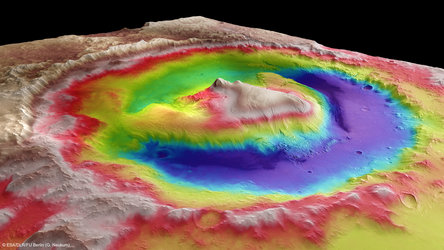High-speed impacts test tech for future missions
ESA is always thinking ahead to the next generation of space missions, testing new technology far in advance to make concepts a reality.
One area being tackled by ESA’s Future Missions Preparation Office is the high-speed delivery of planetary penetrators to sample and analyse the surface and immediate subsurface of a planet or moon.
Planetary penetrators are mini spacecraft that contain a suite of instruments, but they land at high speed – tens to hundreds of kilometres per hour – compared with the conventional 'soft-landers' that have previously been used in planetary or lunar exploration. One benefit over landers and rovers is that penetrators provide access to the subsurface without the need for additional drilling or digging.
To test how well the penetrators and their precious instrument cargo would withstand slamming into the surface of a planet at high-speed, a team of scientists and engineers used a rocket test facility in Wales, UK, to propel their model penetrators into either sand or ice.
By using these two very different materials, the team will learn more about how penetrators might respond if they were used on a mission to Mars or an icy satellite like Jupiter’s moon Europa, for example.
The 20 kg penetrators were powered by 12 solid-propellant boosters to reach an impact speed of 341 m/s – just under the speed of sound.
The movie presented here shows the spectacular impact into 10 tonnes of ice, in slow motion since the entire test only lasted 1.5 seconds.
The sudden deceleration of the penetrator as it struck the ice reached 24 000 g. For comparison, astronauts typically experience 3–4g when they are launched from Earth into space.
The ice immediately shattered, before crumbling into crushed ice grains. Afterwards, the penetrator was retrieved intact, albeit scuffed from the encounter and slightly dented where it struck the roof of the enclosure.
Testing in the coming weeks will reveal exactly how the penetrator’s internal structure survived the impact. The next main phase of development will focus on the battery and communications systems that would also be needed to survive the extremely high forces.
Even though penetrators are not part of any mission currently being planned by ESA, it is important to test the feasibility of new technologies in order to provide a wider range of mission opportunities in the years to come.
More information
For a detailed journal report of the tests, including more videos of both the ice and sand tests, see High-speed tests demonstrate space penetrator concept on ESA’s Science & Technology pages.
The ice impact was carried out on 11 July and the sand impact on 16 July at the rocket sled facility at the UK Ministry of Defence Pendine site in Wales.
The tests were part of ESA’s Core Technology Programme for Cosmic Vision, which is supervised by the Future Missions Preparation Office. The penetrator development programme is being led by Astrium UK, with involvement by Mullard Space Science Laboratory, Qinetiq and Rapid Space Technologies.






